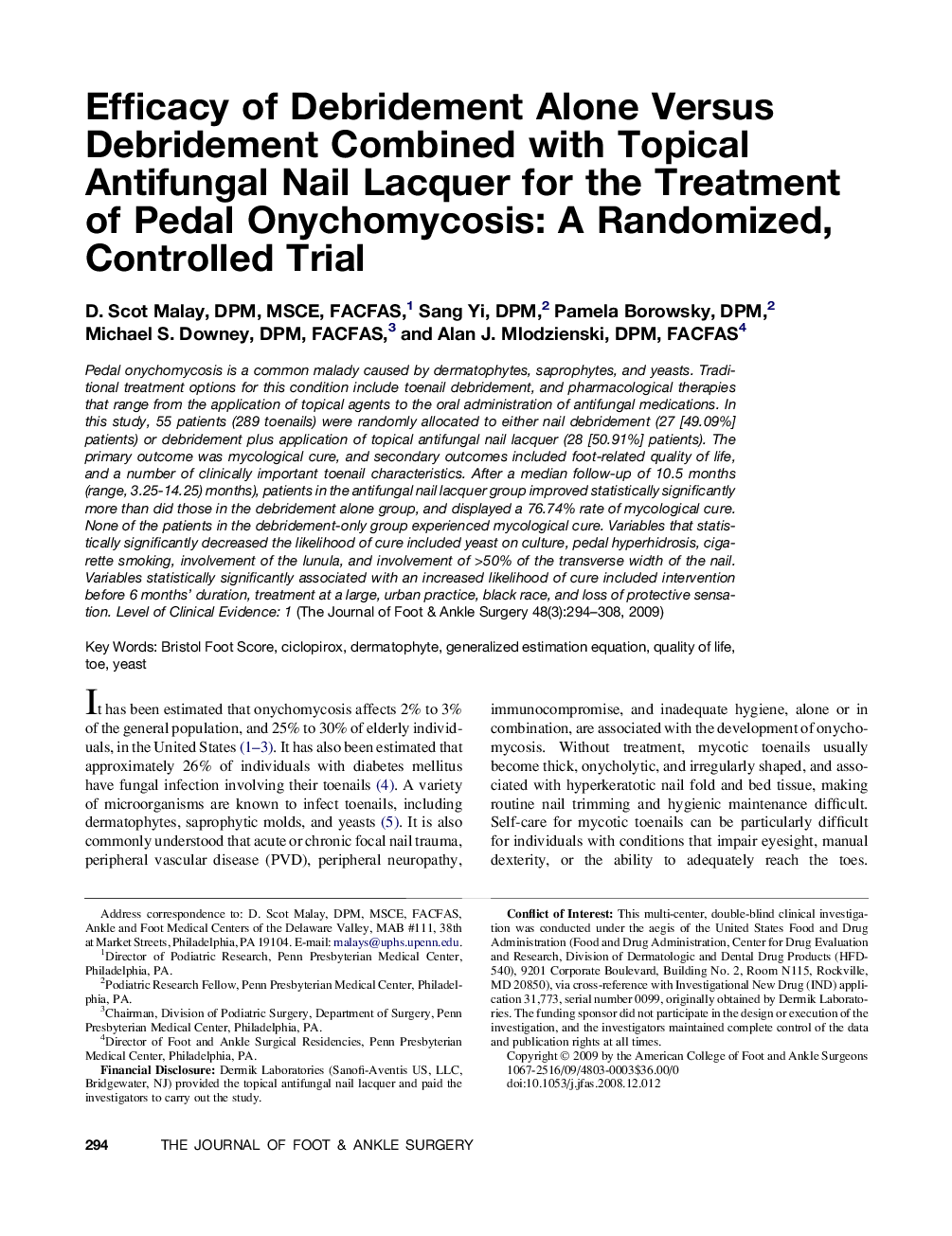| Article ID | Journal | Published Year | Pages | File Type |
|---|---|---|---|---|
| 2715976 | The Journal of Foot and Ankle Surgery | 2009 | 15 Pages |
Pedal onychomycosis is a common malady caused by dermatophytes, saprophytes, and yeasts. Traditional treatment options for this condition include toenail debridement, and pharmacological therapies that range from the application of topical agents to the oral administration of antifungal medications. In this study, 55 patients (289 toenails) were randomly allocated to either nail debridement (27 [49.09%] patients) or debridement plus application of topical antifungal nail lacquer (28 [50.91%] patients). The primary outcome was mycological cure, and secondary outcomes included foot-related quality of life, and a number of clinically important toenail characteristics. After a median follow-up of 10.5 months (range, 3.25-14.25) months), patients in the antifungal nail lacquer group improved statistically significantly more than did those in the debridement alone group, and displayed a 76.74% rate of mycological cure. None of the patients in the debridement-only group experienced mycological cure. Variables that statistically significantly decreased the likelihood of cure included yeast on culture, pedal hyperhidrosis, cigarette smoking, involvement of the lunula, and involvement of >50% of the transverse width of the nail. Variables statistically significantly associated with an increased likelihood of cure included intervention before 6 months' duration, treatment at a large, urban practice, black race, and loss of protective sensation. Level of Clinical Evidence: 1
